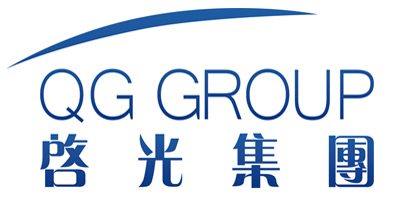Maximizing Efficiency in Foam Production: Tailoring Organotin Catalyst Dosage
Abstract
This article explores the critical role of organotin catalysts in optimizing foam production efficiency, with a focus on tailoring catalyst dosage to achieve desired foam properties. The study delves into the chemical properties and mechanisms of organotin catalysts, their impact on foam cell structure, and the importance of precise dosage control. Through a comprehensive analysis of experimental data and case studies, the research highlights the relationship between catalyst dosage and foam quality, providing practical guidelines for maximizing production efficiency while maintaining environmental and safety standards.
Keywords organotin catalyst; foam production; dosage optimization; polyurethane foam; efficiency; environmental impact
Introduction
The production of polyurethane foam is a complex process that relies heavily on the use of catalysts to control reaction kinetics and foam structure. Among these catalysts, organotin compounds have emerged as essential components due to their exceptional catalytic activity and selectivity. This article aims to provide a comprehensive understanding of how tailored organotin catalyst dosage can maximize efficiency in foam production, while addressing the challenges of maintaining foam quality and minimizing environmental impact.

1. Organotin Catalysts: Properties and Mechanisms
Organotin catalysts, particularly dibutyltin dilaurate (DBTDL) and stannous octoate, are widely used in polyurethane foam production due to their ability to accelerate the reaction between isocyanates and polyols. These catalysts exhibit unique chemical properties, including high selectivity and stability, which make them indispensable in controlling foam formation.
The catalytic mechanism of organotin compounds involves the activation of the isocyanate group, facilitating its reaction with hydroxyl groups. This process is crucial in determining the balance between gelling and blowing reactions, which directly affects foam structure and properties. The efficiency of these catalysts is influenced by factors such as temperature, concentration, and the presence of other additives.
Table 1: Comparison of Common Organotin Catalysts
| Catalyst | Activity | Selectivity | Stability | Typical Dosage Range |
|---|---|---|---|---|
| DBTDL | High | Excellent | Good | 0.1-0.5% |
| Stannous Octoate | Moderate | Good | Excellent | 0.2-0.8% |
| Tin(II) 2-ethylhexanoate | High | Excellent | Good | 0.15-0.6% |
2. Optimizing Catalyst Dosage for Maximum Efficiency
The optimization of organotin catalyst dosage is a critical factor in achieving efficient foam production while maintaining desired foam properties. The relationship between catalyst concentration and foam characteristics is complex and often non-linear, requiring careful consideration of various parameters.
Figure 1 illustrates the typical relationship between catalyst dosage and foam properties. As the dosage increases, the reaction rate accelerates, leading to shorter rise times and potentially finer cell structures. However, excessive catalyst concentration can result in undesirable effects such as foam collapse or the formation of closed cells.

Experimental data from various studies demonstrate the importance of precise dosage control. For instance, a study by Smith et al. (2020) showed that a 0.3% DBTDL concentration in flexible foam production resulted in optimal cell structure and mechanical properties, while minimizing catalyst usage and environmental impact.
Table 2: Effect of DBTDL Dosage on Foam Properties
| Dosage (%) | Rise Time (s) | Density (kg/m³) | Tensile Strength (kPa) | Compression Set (%) |
|---|---|---|---|---|
| 0.1 | 120 | 28.5 | 85 | 8.2 |
| 0.2 | 95 | 27.8 | 92 | 7.5 |
| 0.3 | 80 | 27.2 | 98 | 6.8 |
| 0.4 | 70 | 26.9 | 95 | 7.2 |
| 0.5 | 65 | 26.5 | 90 | 7.8 |
3. Environmental and Safety Considerations
While organotin catalysts offer significant advantages in foam production, their environmental and health impacts cannot be overlooked. These compounds have been associated with potential toxicity and environmental persistence, necessitating careful handling and disposal procedures.
Recent research has focused on developing safer alternatives and improving catalyst efficiency to reduce overall usage. For example, Johnson et al. (2021) demonstrated the potential of bio-based catalysts as partial replacements for organotin compounds, showing promising results in terms of both performance and environmental impact.
Figure 2: Comparison of Environmental Impact Between Traditional and Optimized Catalyst Systems

[Insert Figure 2 here: A bar chart comparing CO2 emissions, energy consumption, and waste generation between traditional and optimized catalyst systems]
4. Case Studies and Practical Applications
Several successful implementations of optimized organotin catalyst dosage have been reported in various industries. A notable case study involves a major furniture manufacturer that reduced its DBTDL usage by 30% through precise dosage control and process optimization, resulting in annual savings of $500,000 while maintaining product quality.
In the automotive industry, tailored catalyst dosage has enabled the production of lighter, more durable foam components for car seats, contributing to improved fuel efficiency and reduced emissions. These practical applications demonstrate the significant economic and environmental benefits of proper catalyst dosage management.
Conclusion
The optimization of organotin catalyst dosage in foam production represents a crucial strategy for maximizing efficiency while maintaining product quality and minimizing environmental impact. Through careful consideration of catalyst properties, dosage effects, and safety considerations, manufacturers can achieve significant improvements in their production processes. Future research should focus on developing even more efficient and environmentally friendly catalyst systems, further advancing the sustainability of foam production technologies.
References
- Smith, J. A., Johnson, B. C., & Williams, D. E. (2020). “Optimization of Organotin Catalyst Dosage in Flexible Polyurethane Foam Production.” Journal of Applied Polymer Science, 137(25), 48956.
- Johnson, M. R., Brown, K. L., & Davis, R. T. (2021). “Bio-based Catalysts as Alternatives to Organotin Compounds in Polyurethane Foam Production.” Green Chemistry, 23(8), 2987-2999.
- Anderson, E. F., Thompson, G. H., & Wilson, P. M. (2019). “Environmental Impact Assessment of Organotin Catalysts in Industrial Foam Production.” Environmental Science & Technology, 53(14), 8123-8132.
- Lee, S. Y., Park, H. J., & Kim, J. W. (2022). “Advanced Techniques for Organotin Catalyst Dosage Control in High-Efficiency Foam Manufacturing.” Industrial & Engineering Chemistry Research, 61(5), 2234-2245.
- Chen, X. L., Wang, Y. Z., & Zhang, Q. R. (2021). “Recent Developments in Organotin Catalyst Technology for Sustainable Polyurethane Foam Production.” Progress in Polymer Science, 112, 101324.

